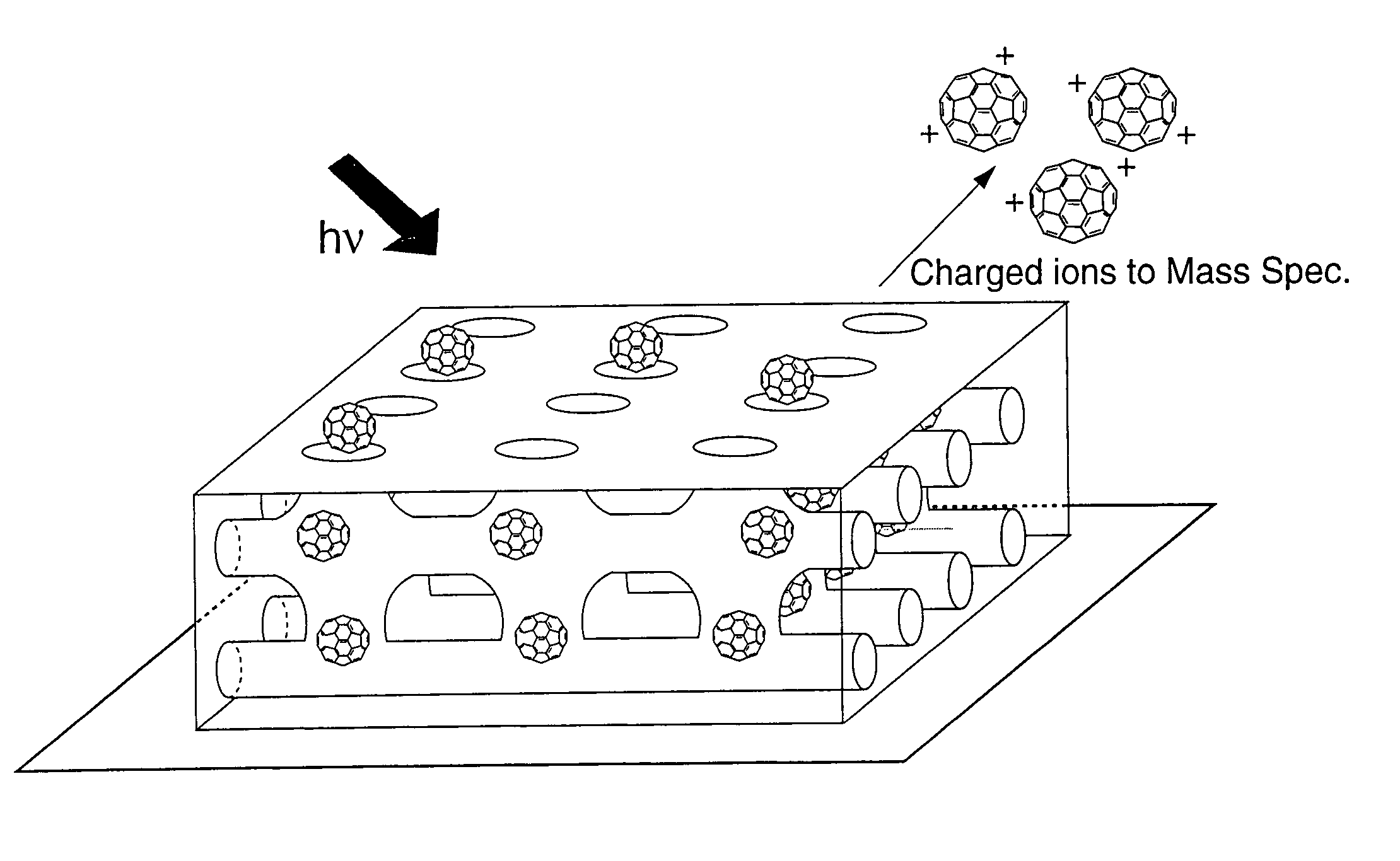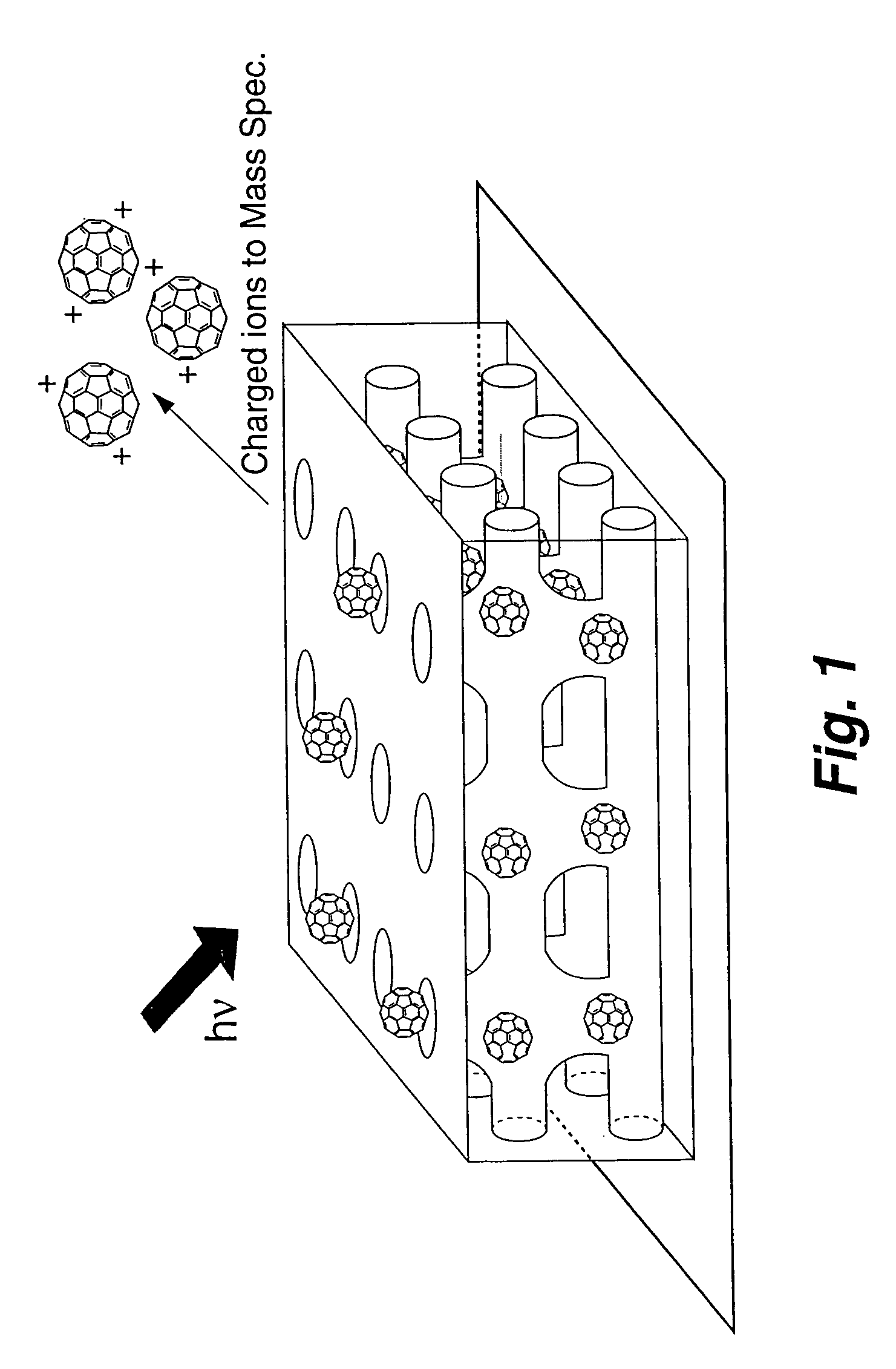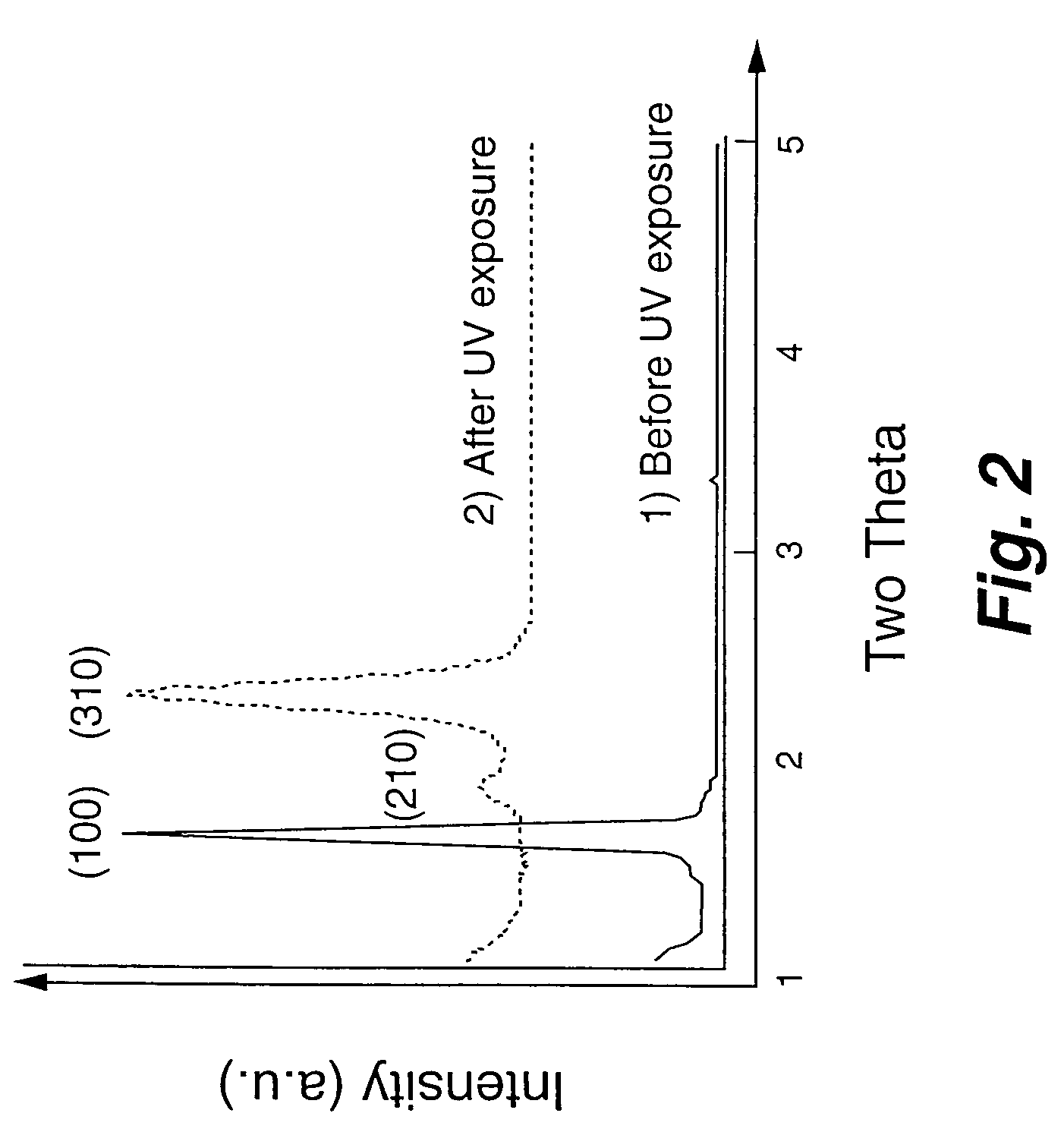Sample desorption/ionization from mesoporous silica
a technology of mesoporous silica and sample desorption, which is applied in the field of mass spectrometry, can solve the problems of being unusable after about a month, being difficult or impossible to measure with maldi, and disadvantages of using porous silicon substrates
- Summary
- Abstract
- Description
- Claims
- Application Information
AI Technical Summary
Problems solved by technology
Method used
Image
Examples
example 1
[0041]A thin film of mesoporous silica was formed as follows. First, a solution of tetraorthosilicate (TEOS, 61 milliliters, ALDRICH), anhydrous ethanol (C2H5OH, 61 milliliters, FISHER), deionized water (0.44 milliliters, greater than 18 MΩ), and hydrochloric acid (0.2 milliliters of 0.07 molar HCl) was prepared. The solution was heated to reflux at a temperature of about 60 degrees Celsius for about 90 minutes. After allowing the solution to cool to room temperature, a 10 ml aliquot of the solution was diluted with anhydrous ethanol (20 ml), hydrochloric acid (1 ml of 0.07 M HCl), and water (0.35 ml), and a surfactant. Brij56 (C16H33(OCH2CH2)nOH, wherein n is about 10) was added to yield final mole ratios of 1 TEOS:22.2 C2H5OH:5.03H2O:0.004 HCl:0.002–0.045 surfactant. The solution was then placed in a sonicating bath and sonicated until the surfactant dissolved.
[0042]A silicon substrate was cleaned by exposure to deep ultraviolet radiation (184–254 nanometers). The substrate was pl...
example 2
[0046]A patterned, mesoporous silica thin film having a film thickness of about 200 nm and a pore size of about 4 nm was prepared as described in EXAMPLE 1. After aging the film in the air for 6 months, a sample of C60 dissolved in toluene (1 mM) was spotted on the film, which was put into an ion generating section of a mass spectrometer where it was exposed to a laser light beam to desorb and ionize the sample, and the desorbed and ionized sample is detected. The resulting spectrum is shown in FIG. 4
example 3
[0047]A patterned, mesoporous silica thin film having a film thickness of about 200 nm and a pore size of about 4 nm was prepared as described in EXAMPLE 1. After aging the thin film in the air for about 6 months, a sample of tryptophan dissolved in trifluoroacetic acid was adsorbed onto and into the patterned mesoporous silica thin film. The thin film with adsorbed sample was put into an ion generating section of a mass spectrometer where it was exposed to a laser light beam to desorb and ionize the sample, and the desorbed and ionized sample is detected. The resulting spectrum is shown in FIG. 5.
[0048]Thus, the invention was successfully demonstrated using mesoporous silica thin films prepared using Brij56 surfactant templates. In contrast to commercially available porous silicon chips that lose their ability to desorb after about a month, mesoporous silica films used with the present invention retain their desorbing capability as evidenced by desorption / ionization of C60 and tryp...
PUM
| Property | Measurement | Unit |
|---|---|---|
| thickness | aaaaa | aaaaa |
| pore size | aaaaa | aaaaa |
| molecular weight | aaaaa | aaaaa |
Abstract
Description
Claims
Application Information
 Login to View More
Login to View More - R&D
- Intellectual Property
- Life Sciences
- Materials
- Tech Scout
- Unparalleled Data Quality
- Higher Quality Content
- 60% Fewer Hallucinations
Browse by: Latest US Patents, China's latest patents, Technical Efficacy Thesaurus, Application Domain, Technology Topic, Popular Technical Reports.
© 2025 PatSnap. All rights reserved.Legal|Privacy policy|Modern Slavery Act Transparency Statement|Sitemap|About US| Contact US: help@patsnap.com



